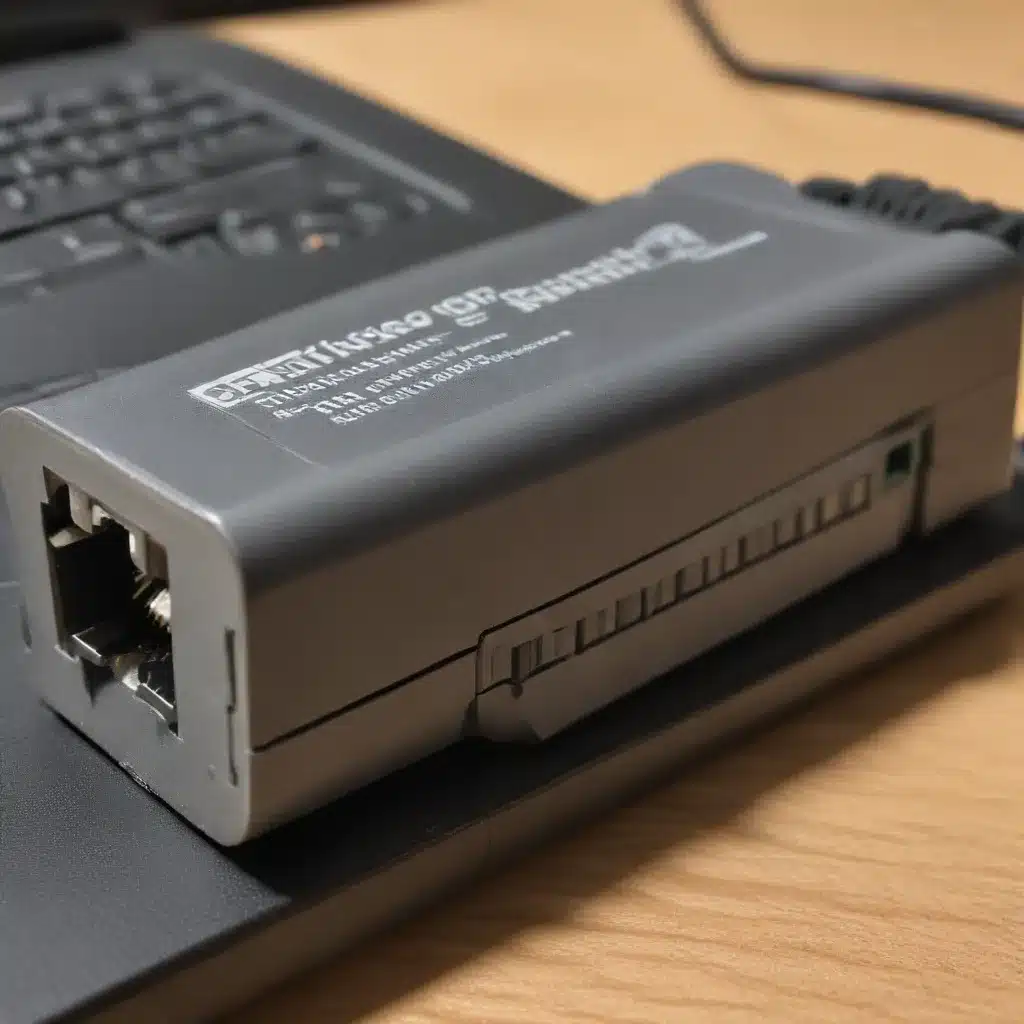
Understanding Ethernet Adapter Limitations
As technology continues to evolve, laptops have become increasingly versatile and powerful. However, one area where laptop performance can fall short is in their onboard network connectivity. Many laptops come equipped with basic Ethernet adapters that may not be able to deliver the high-speed, reliable wired network performance that users demand, especially for activities like online gaming, video streaming, or large data transfers.
If you’ve noticed slow download speeds, high ping times, or inconsistent network performance on your laptop, it may be time to consider upgrading your Ethernet adapter. By replacing the built-in adapter with a higher-quality, more capable model, you can unlock faster, more stable wired network connectivity and enjoy a smoother online experience.
Diagnosing Ethernet Adapter Issues
Before diving into an Ethernet adapter upgrade, it’s important to first identify the root cause of any network performance problems you may be experiencing. Some common signs that your laptop’s Ethernet adapter is underperforming include:
- Slow download and upload speeds, even when connected directly to your modem or router
- High ping times or latency, especially in online games or video calls
- Frequent disconnections or unstable network connections
- Inability to take full advantage of your internet service provider’s (ISP) advertised speeds
If you’ve encountered any of these issues, it’s worth investigating further to determine if an Ethernet adapter upgrade could be the solution.
Factors to Consider When Upgrading
When selecting a new Ethernet adapter for your laptop, there are several key factors to take into account:
Bandwidth and Speed
The most important consideration is the adapter’s maximum supported bandwidth and connection speed. Look for models that can handle Gigabit Ethernet (1000 Mbps) or even 2.5/5 Gigabit Ethernet, which can provide significantly faster wired network performance than standard Fast Ethernet (100 Mbps) adapters.
Compatibility
Ensure that the Ethernet adapter you choose is compatible with your laptop’s operating system and hardware. Check the manufacturer’s specifications to confirm it will work seamlessly with your device.
Reliability and Build Quality
Opt for a well-known, reputable brand that offers a sturdy, durable design. This will help ensure your Ethernet adapter provides consistent, long-lasting performance.
Additional Features
Some advanced Ethernet adapters may offer additional features like support for Power over Ethernet (PoE), network teaming/aggregation, or even integrated Wi-Fi capabilities. Evaluate whether these extra features would be valuable for your specific needs.
Price and Value
While you don’t necessarily need to choose the most expensive option, it’s important to balance cost with quality and performance. A higher-quality Ethernet adapter may cost more upfront, but it can provide a better long-term investment in terms of reliable, high-speed network connectivity.
Upgrading Your Laptop’s Ethernet Adapter
Once you’ve identified the right Ethernet adapter for your needs, the process of upgrading is generally straightforward. Here are the typical steps:
-
Obtain the Necessary Equipment: In addition to the new Ethernet adapter, you’ll also need a compatible Ethernet cable to connect your laptop to your network.
-
Prepare Your Laptop: Shut down your laptop and unplug the power cable. Locate the available Ethernet port or expansion slot where you’ll be installing the new adapter.
-
Install the New Ethernet Adapter: Carefully insert the new adapter into the available slot, ensuring a secure connection. Consult your laptop’s user manual or the adapter’s installation guide for any specific instructions.
-
Connect the Ethernet Cable: Plug one end of the Ethernet cable into the new adapter’s port, and the other end into your modem, router, or network switch.
-
Power On and Test: Turn your laptop back on and wait for the operating system to detect the new Ethernet adapter. Check your network settings to ensure the adapter is properly configured and connected.
-
Verify Performance Improvements: Run speed tests or perform tasks that were previously affected by poor network performance to assess the improvements provided by the new Ethernet adapter.
If you encounter any issues during the installation or setup process, refer to the adapter manufacturer’s support resources or consider reaching out to a qualified IT professional for assistance.
Maximizing Ethernet Adapter Performance
Once you’ve successfully upgraded your laptop’s Ethernet adapter, there are a few additional steps you can take to ensure you’re getting the most out of your new hardware:
Update Drivers and Firmware
Check the adapter manufacturer’s website for the latest driver and firmware updates, which can provide performance enhancements and bug fixes.
Optimize Network Settings
Adjust your laptop’s network settings, such as disabling power-saving features or enabling Quality of Service (QoS) protocols, to further optimize wired network performance.
Leverage Network Teaming or Aggregation
If your new Ethernet adapter supports these advanced features, you can potentially combine multiple network interfaces to boost available bandwidth and redundancy.
Consider Supplementary Network Solutions
For users with particularly demanding network requirements, investing in a high-quality network switch or network-attached storage (NAS) device can further improve overall wired network performance and reliability.
By following these tips and leveraging the capabilities of your upgraded Ethernet adapter, you can unlock the full potential of your laptop’s wired network connectivity and enjoy a superior online experience.
Conclusion
Upgrading your laptop’s Ethernet adapter is a simple, yet effective way to improve wired network performance and overcome the limitations of built-in connectivity options. By carefully evaluating your needs, selecting the right adapter, and properly implementing the upgrade, you can unlock faster downloads, lower latency, and a more stable, reliable network connection.
Whether you’re a avid gamer, a remote worker, or simply someone who values a seamless online experience, investing in a high-quality Ethernet adapter can be a game-changer for your laptop’s network capabilities. Stay informed, do your research, and enjoy the benefits of enhanced wired network performance on your device.
For more information on IT solutions, computer repair, and technology trends, be sure to visit IT Fix – your go-to resource for practical tips and in-depth insights from seasoned IT professionals.












